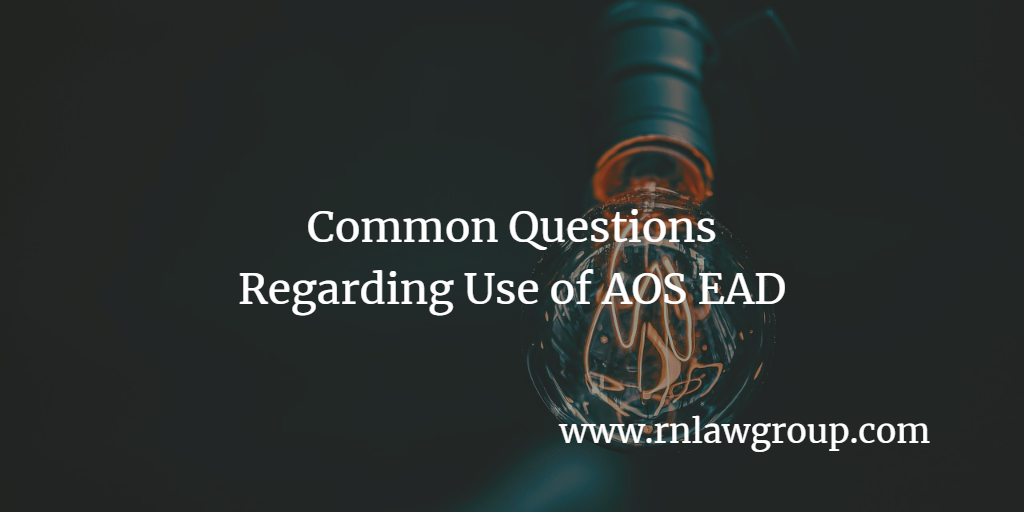
Common Questions Regarding Use of AOS EAD
Those who have filed an employment-based adjustment of status application, Form I-485, likely know that they may also include an application for employment authorization (EAD) and travel document (AP). Employment-based green card applicants are eligible for both the EAD and AP simply by virtue of the fact that they have a pending I-485 application. Dependent spouses and children are also eligible. The purpose of these documents is to allow visa-free work and travel while you wait to receive your green card.
Many questions arise once you receive your EAD, which usually comes as a combo card with the AP if filed together.
Q: If my I-140 is still pending, am I still eligible to receive the EAD/AP approval?
A: Yes. There is no requirement that the I-140 be approved in order to receive the EAD/AP. The pending I-485 by itself makes you eligible.
Q: If my priority date retrogresses after filing the I-485, am I still eligible to receive the EAD/AP approval?
A: Yes. There is no requirement that the priority date continue to be current in order to receive the EAD/AP. These documents can also continue to be renewed the entire time the I-485 remains pending, regardless of immigrant visa availability.
Q: My EAD and AP are approved, does that mean I am no longer in H/L or other nonimmigrant status?
A: No. Individuals with a pending I-485 application can continue to remain in the underlying nonimmigrant status. Approval of an EAD and/or AP does not cause someone to lose the nonimmigrant status.
Q: I am in H-1B status and my spouse is in H-4 status. If I use my AOS EAD to work, what happens to our status?
A: Both you and your spouse would no longer be maintaining your nonimmigrant status. You would both be in lawful status based on your pending adjustment of status application. This same is true for L-1/L-2 couples.
Q: I am in H-1B status and my spouse is in H-1B status. If I use my AOS EAD to work, what happens to our status?
A: You would no longer be maintaining your nonimmigrant status, but your spouse would be able to continue his or her nonimmigrant status since their nonimmigrant status is not dependent on yours.
Q: I am in L-1B status and my spouse is in L-2 status. If my spouse uses the AOS EAD to work, what happens to our status?
A: Your spouse would no longer be maintaining nonimmigrant status, but you would be able to continue your nonimmigrant status since yours is not dependent.
Q: What do I have to do in order to switch from H-1B to AOS EAD?
A: Technically nothing. There is no requirement to inform USCIS which employment authorization you are using. The next time you are asked to complete the I-9 process by an employer, you would provide your EAD card as a List A document instead of your H-1B I-94 and passport.
Q: If I travel using the AP, can I continue my H-1B status?
A: Yes, according to the May 25, 2000 Cronin memo. It states, “an alien who was an H-1 or L-1 nonimmigrant, but who was paroled pursuant to a grant of advance parole, may apply for an extension of H-1 or L-1 status, if there is a valid and approved petition. If the Service approves the alien’s application for an extension of nonimmigrant status, the decision granting such an extension will have the effect of terminating the grant of parole and admitting the alien in the relevant nonimmigrant classification.” This assumes that the adjustment applicant continues to work for the same employer that sponsored the H or L petition under the same terms and conditions.
Q: If I use my AOS EAD, can I later file a new I-485 application under a different preference category based on another I-140 approval with a more favorable cut-off date?
A: No. At the time of filing an I-485 application, an employment-based applicant must be in a nonimmigrant status. Once the EAD card is utilized, the nonimmigrant status is forgone and a new adjustment of status application is not possible. Changing preference categories may only be possible through interfiling.
Q: If I use my AOS EAD, can I later switch back to a nonimmigrant status?
A: Technically yes, but it cannot be done with USCIS while you remain in the United States. It would require a valid I-129 petition approval, a valid visa stamp (or use of automatic revalidation), a valid Advance Parole, and a trip outside the United States.
By: Emily Neumann, Managing Partner

